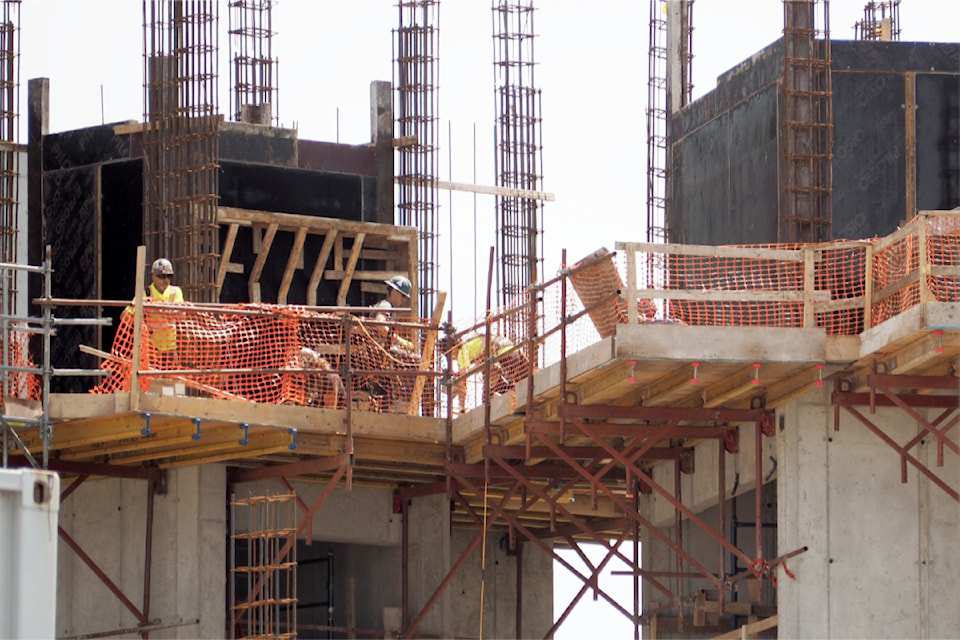Nanaimo approved occupancy for 875 housing units in the last 12 months, surpassing the city's provincially mandated housing target – but none of the new homes are below-market-rate housing.
The housing targets were introduced through a provincial ministerial order in June 2024, requiring more municipalities to meet set housing numbers. Nanaimo's most recent update was in March, when council was told by staff the city was "well on its way" to meeting its target.
From July 2024 to to June 2025, the city was given the target of 783 new housing units. Lisa Brinkman, the city's manager for community planning, said in addition to beating the ministry's target,109 homelessness response units were made available, with 59 of those at 1030 Old Victoria Rd. set to be occupied any day.
Rental units were also met, with 825 approved rental units, compared to the 554 provincial target. Nanaimo's rental vacancy rate increased to 2.9 per cent in 2024, continuing its climb since 2020 toward a goal of three per cent.
"When a three-per cent vacancy rate is achieved, rents are more likely to be held at affordable levels…" Brinkman said. "In recent years there has been so much construction of rental units we are approaching a three-per cent vacancy rate, which is great news for affordability for renters."
Nanaimo fell short on its overall housing targets for studio and one-bedroom units. The target was 625 studio and one-bedroom units, 155 two-bedroom units and 161 units with three or more bedrooms, but Nanaimo approved 346 one-bedroom units, 315 two-bedroom units and 214 units with three or more bedrooms.
"It is a five-year reporting period, so we will monitor that," Brinkman said. "It could just be this year we didn't meet the one-bedroom target and if there is something we need to do to try to incent more one-bedroom units, we have tools, we can do that."
Nanaimo also fell short on below-market units with zero below-market-housing units, 386 short of the goal. Brinkman said staff doesn't anticipate that the city will meet that target in the coming years, but expect to be "closer."
"The city is working with B.C. Housing every week, different departments are meeting with B.C. Housing and we have achieved, in the past [seven] years, over 318 below-market units and there's 683 below-market units in stream at different phases of the development process."
She drew attention to 250 Terminal Ave, which is currently in process. Once approved, its expected to provide 37 affordable housing units and 50 supportive housing units. Additionally there is 1850 Boxwood Rd., which when approved is expected to provide 22 complex care housing units.
Nanaimo has several incentives for below-market housing including reducing development cost charges for not-for-profit rental housing, and allowing developers to increase density for below-market units. There are also tax exemptions for non-profit housing.
"Since the city actually doesn't construct housing or below-market housing we're using all the tools we have to provide incentives for below-market housing units," Brinkman said.
In 2024, 96 rent bank loans were issued to support 210 Nanaimo residents at risk of eviction, and 156 rent supplements were issued, supporting 212 Nanaimo residents at risk of eviction.
"The successful rent bank and rent supplement programs mean market housing units are actually turned into below-market housing units to keep people housed … So we are achieving below-market units in that way as well."
Brinkman said that if a municipality doesn't meet its targets, the province will appoint someone to work with staff in the planning and building department to examine what can be done differently.
Following the staff presentation on the numbers, Coun. Ben Geselbracht stated provincial and federal dollars were needed for non-market housing.
"There has been a lot of pressure on local government to being accountable to meeting our market housing targets and in most cases we are meeting it," he said, "but accountability the other way around for the non-market housing which is showing that there's a big gap, and that accountability is not there in a reverse direction and I do think it is something to note and look at how we can remedy that."
The , a separate report presented at the end of last year, indicated the city needs 1,300 new homes per year in order to accommodate population growth.



